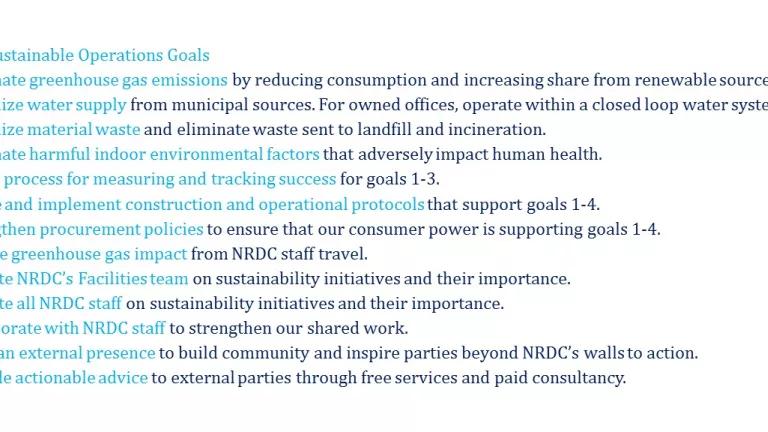Implementing the Kigali Amendment: Key Issues for India
Co-authored with Alex Hillbrand
One of the most successful international environmental treaties, the Montreal Protocol, is celebrating its 30th anniversary at the Meeting of the Parties (MOP) next week in Montreal. The Protocol, adopted in 1987, is a prime example of the effectiveness of international cooperation. It has been successful in eliminating 98 percent of the planet’s ozone depleting substances and protecting the health of people around the world. India, a signatory to the Protocol since 1992, has been proactive in compliance and played a key role in achieving the historic Kigali Amendment last year for phasing down Hydrofluorocarbons (HFCs), powerful greenhouse gases contributing to global climate change. As the parties meet in Montreal, there are three key issues of interest to India and other developing countries.
Integrating energy efficiency with refrigerant transitions
The Montreal Protocol has a long history of improving appliance energy efficiency through refrigerant changes. With a rapidly growing domestic demand for air conditioning, India recognizes the HFC phase down as an opportunity to redesign room air conditioners (ACs) to be more efficient and alleviate the strain on its electric grid. The Montreal Protocol’s Technology and Economic Assessment Panel (TEAP) recently estimated that it is feasible to achieve air conditioner efficiency improvements of 30-40 percent beyond the currently best available technology in the world. The upcoming MOP will discuss financial and technical support for energy efficiency that could lead the path forward toward a more climate-friendly cooling. India, and other parties, have called for financial support from the Montreal Protocol’s funding arm, the Multilateral Fund for enabling these efforts.
Multilateral Fund replenishment and financing
The parties will also finish their negotiations over replenishment of the Multilateral Fund for 2018-2020 for assistance to developing countries in achieving their previously agreed reduction commitments. TEAP released a report in early October estimating approximately that more than $500 million in funding would be required over the three-year replenishment period. While most of these funds are for implementation of the accelerated HCFC phase-out commitments agreed in 2007, the replenishment has several potential impacts:
- Financial support would be included for early actions for Kigali Amendment implementation such as work on institutional arrangements and licensing systems, data reporting on HFC production and consumption, and more.
- Financing would be provided for pilot HFC conversion projects that offer AC manufacturing companies a chance to jump-start the transition to lowest global warming potential (GWP) refrigerants.
- Funding could be provided for Group 2 countries, of which India is a part. In the current agreement, Group 2 countries have opted for freezing and reduction of HFCs over a longer time frame than countries in the Group 1. An accelerated phasedown presents significant advantages for the Indian cooling industry in leapfrogging to the best alternatives and may provide an increased access to multilateral funding. India has in the past met its Montreal Protocol targets ahead of schedule and should aspire to continue that legacy.
Safety standards
Several low-GWP refrigerants are more flammable than the chemicals they are replacing, and India and other parties have articulated the need to address safety concerns. The Montreal Protocol and its implementing agencies are working with countries to understand these safety issues. Before the Montreal Protocol’s 39th Open Ended Working Group meeting in July 2017, the Ozone Secretariat held a special workshop on safety standards for flammable refrigerants. At the upcoming MOP, the role of international safety standards will be discussed along with Multilateral Fund support for funding efforts on incorporating safe refrigerants.
NRDC and our partners, The Energy and Resources Institute (TERI) and the Institute for Governance and Sustainable Development (IGSD) have been engaging with leading businesses in India and internationally to develop solutions to support climate-friendly cooling. Kigali Amendment has received wide support from businesses, with several transition projects already planned in India. At the MOP, we will be presenting policy and technical recommendations to facilitate a rapid and safe transition to climate friendly refrigerants.
It is estimated that phase down of HFCs under the Amendment could avoid up to 0.5°C of global warming by the end of the century, while continuing to protect the ozone layer. Therefore, early ratification of the Amendment is critical. The leadership and flexibility of both developed and developing economies was vital in achieving the Kigali Amendment. Implementing the amendment will require the same global cooperation, bringing industry and regulators together to continue the Protocol’s 30-year history of success. India has been a key partner in this success, and should continue to show leadership in protecting the health of its people and the planet.




